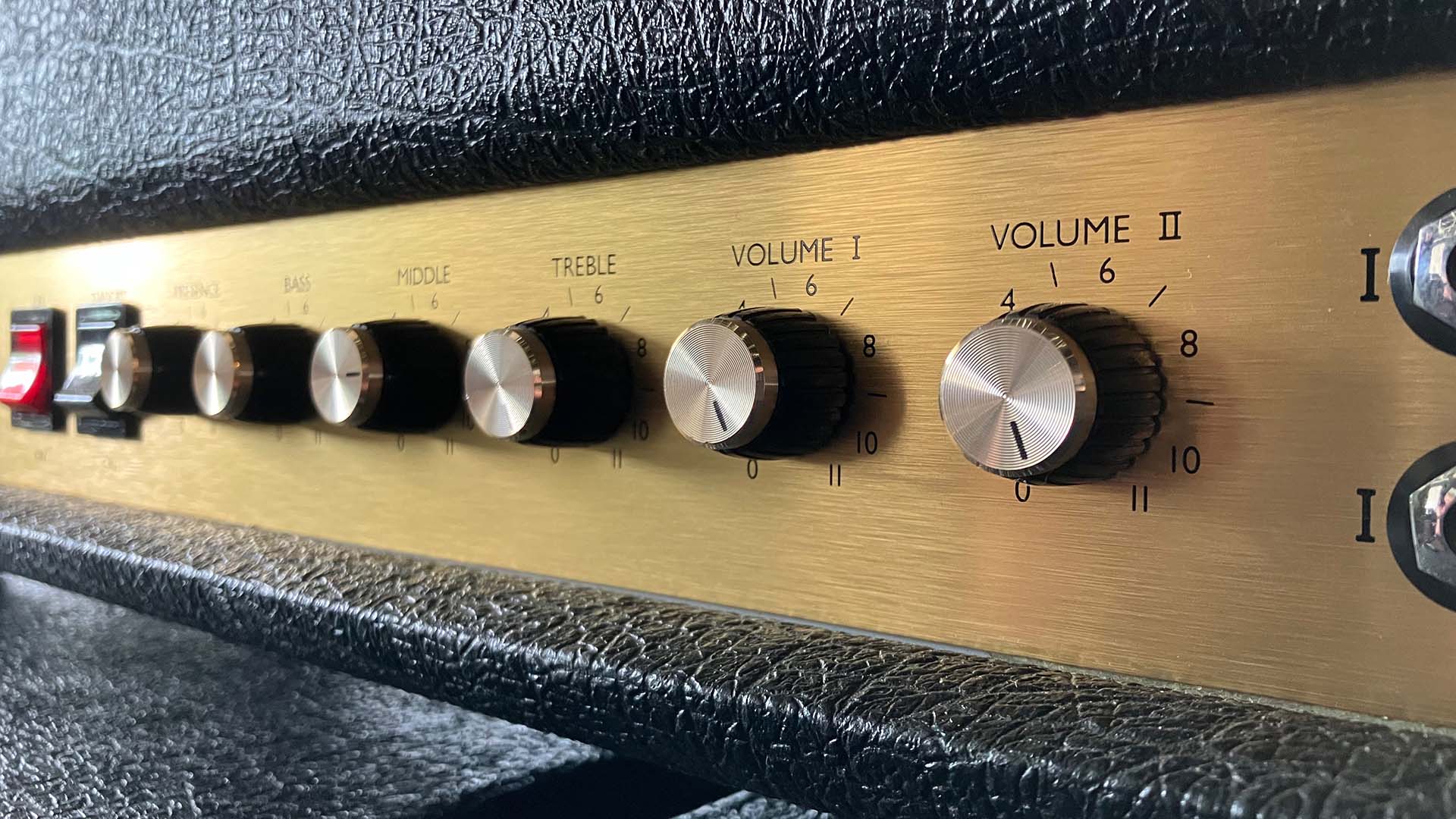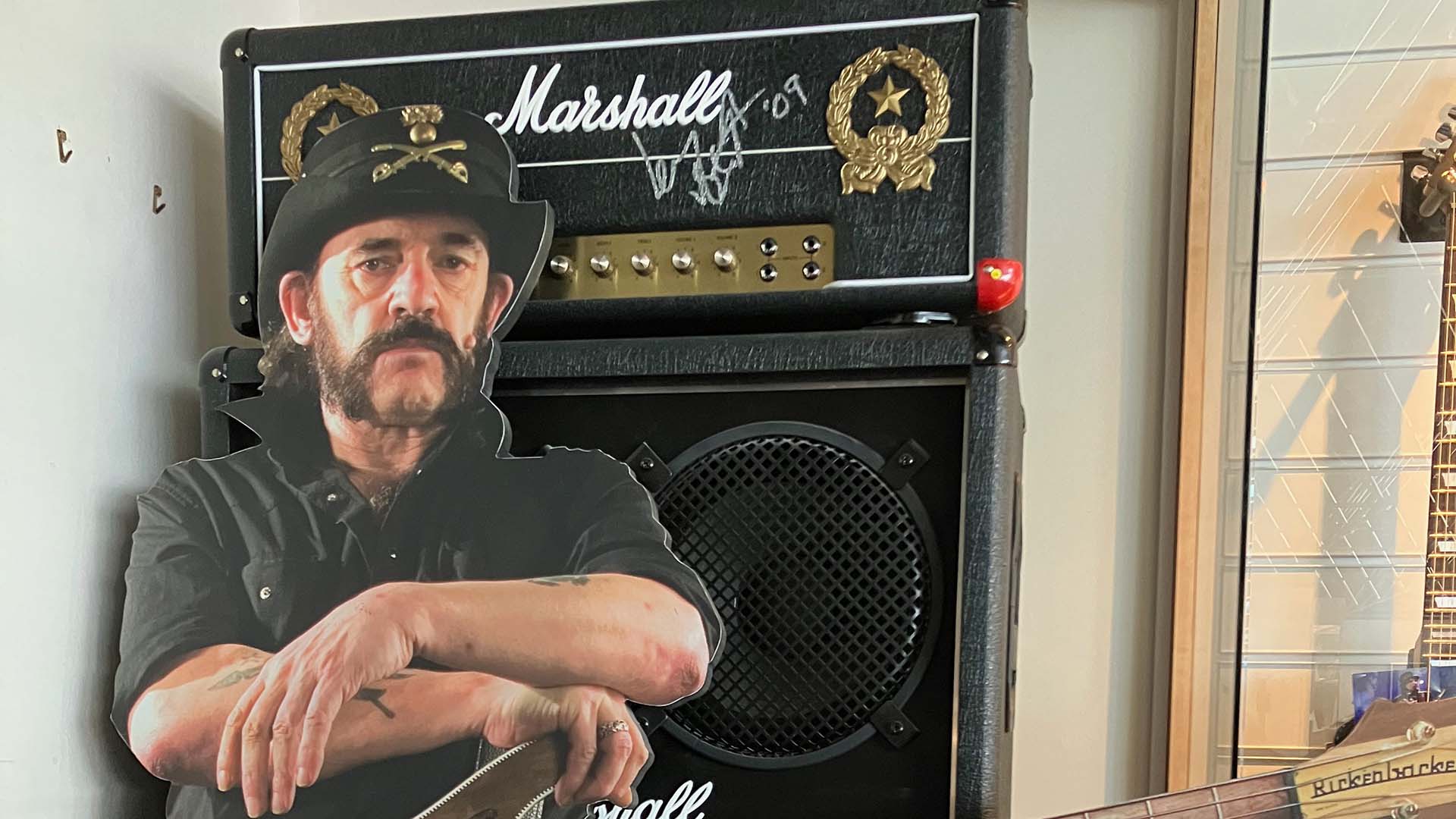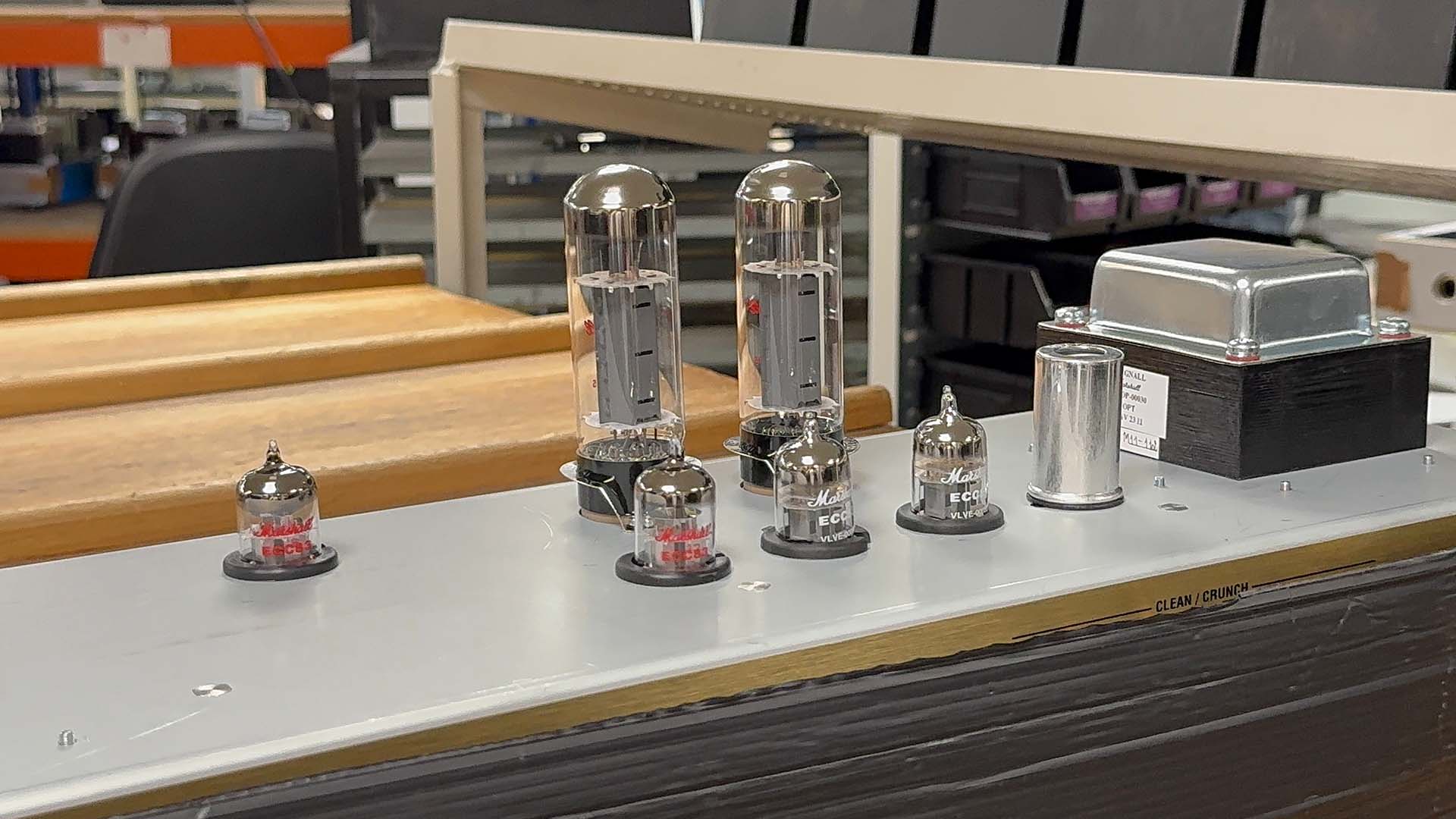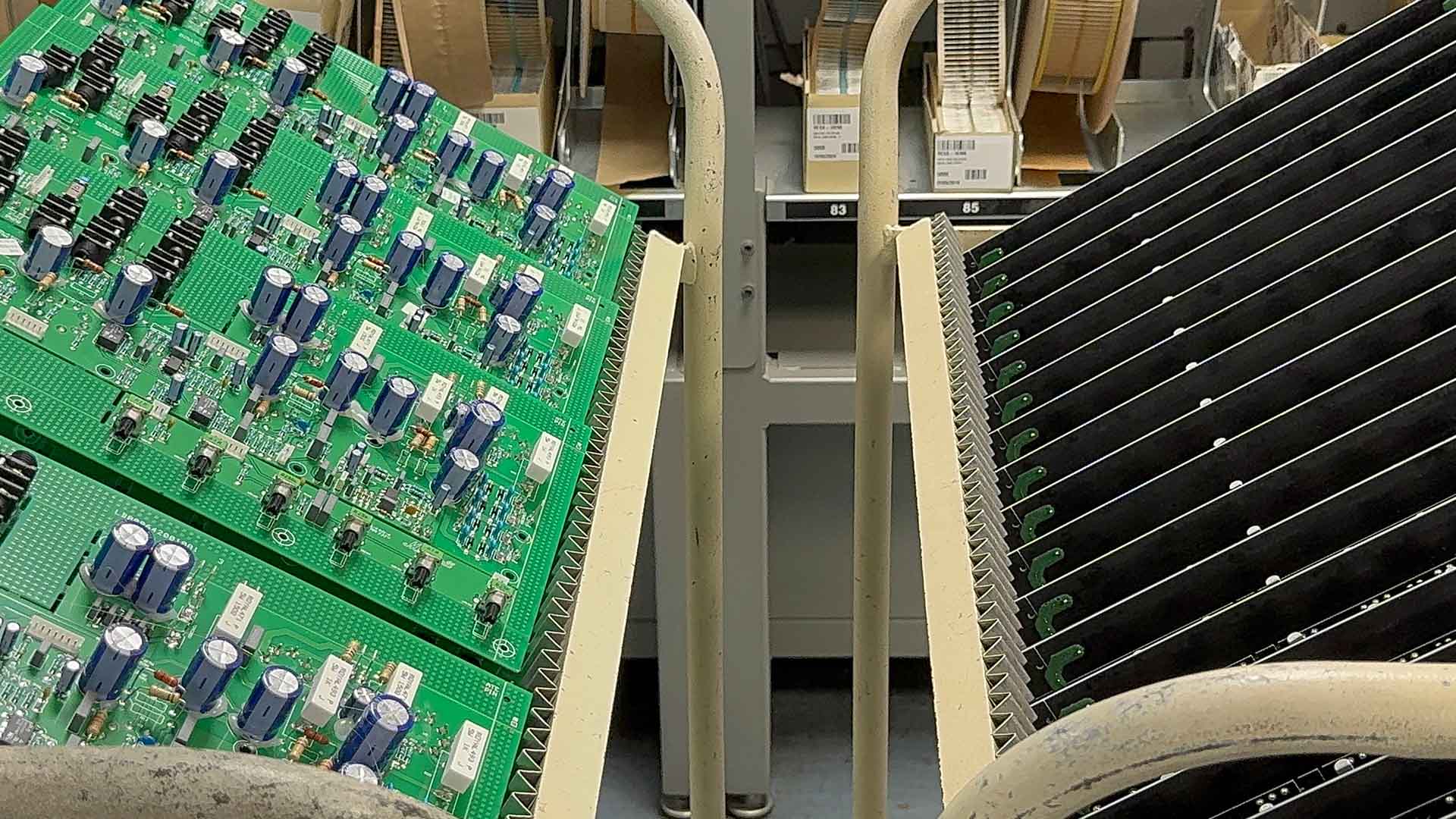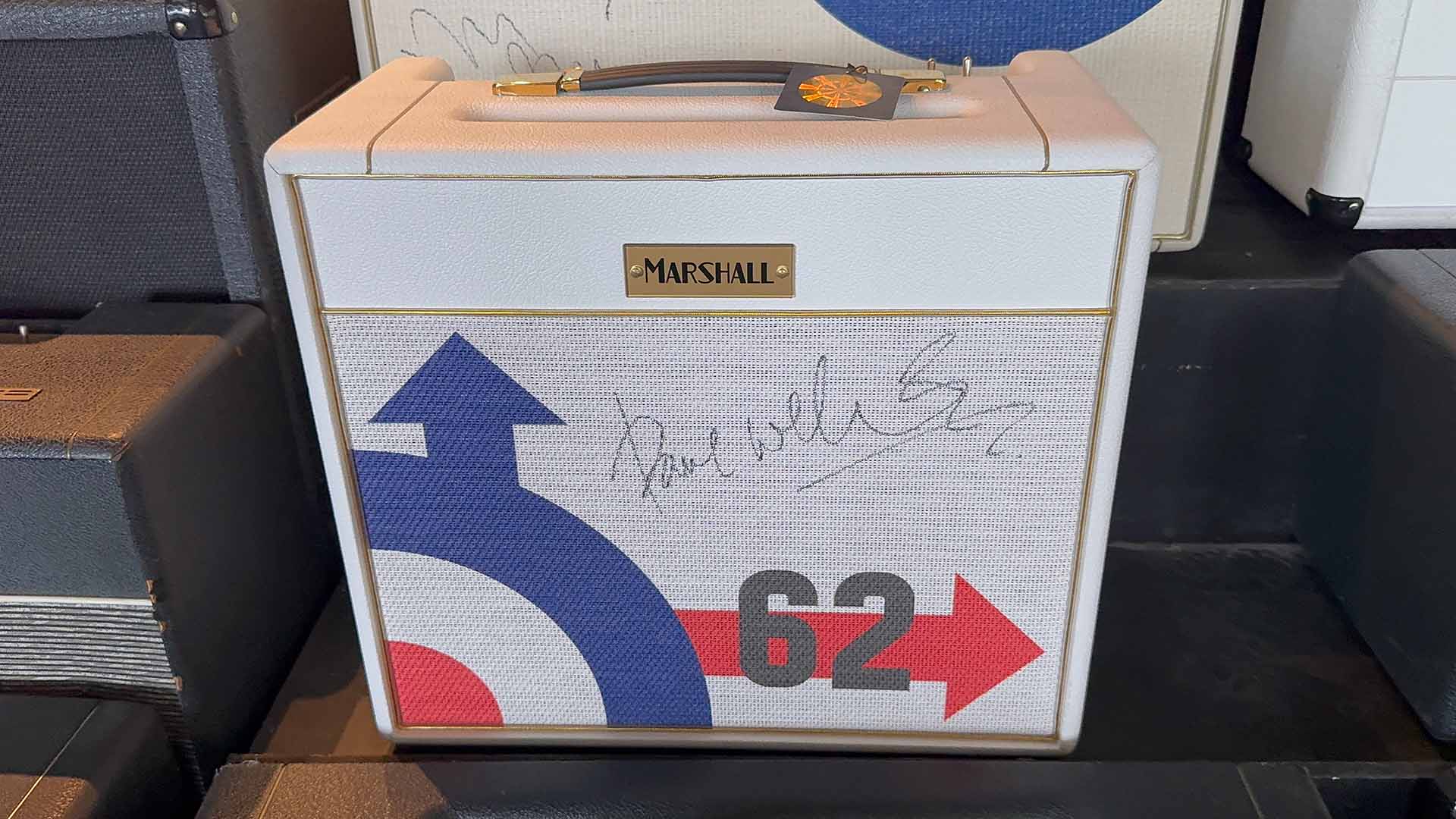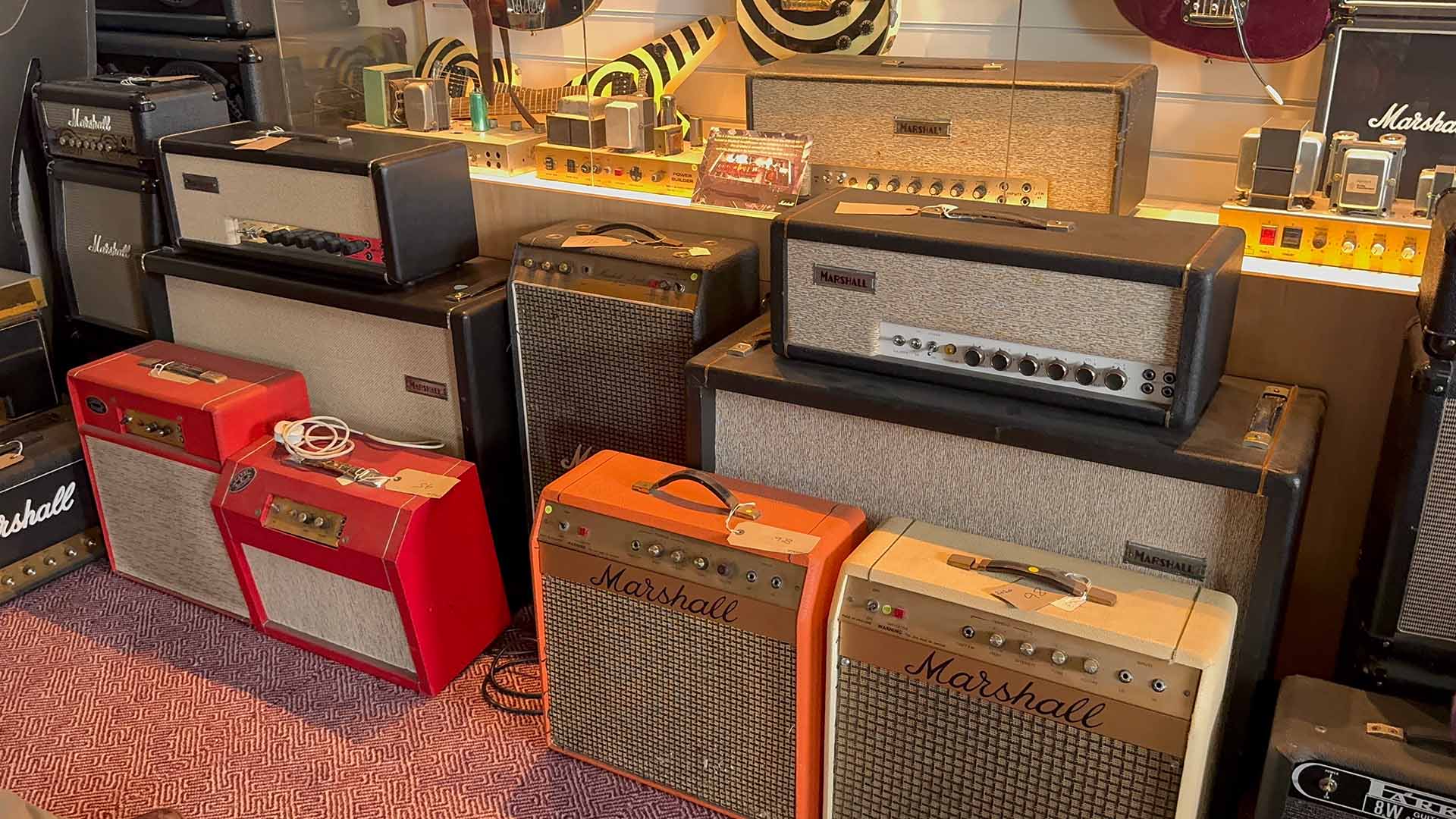Amplification Project research team take it up to 11 on Marshall Amps visit
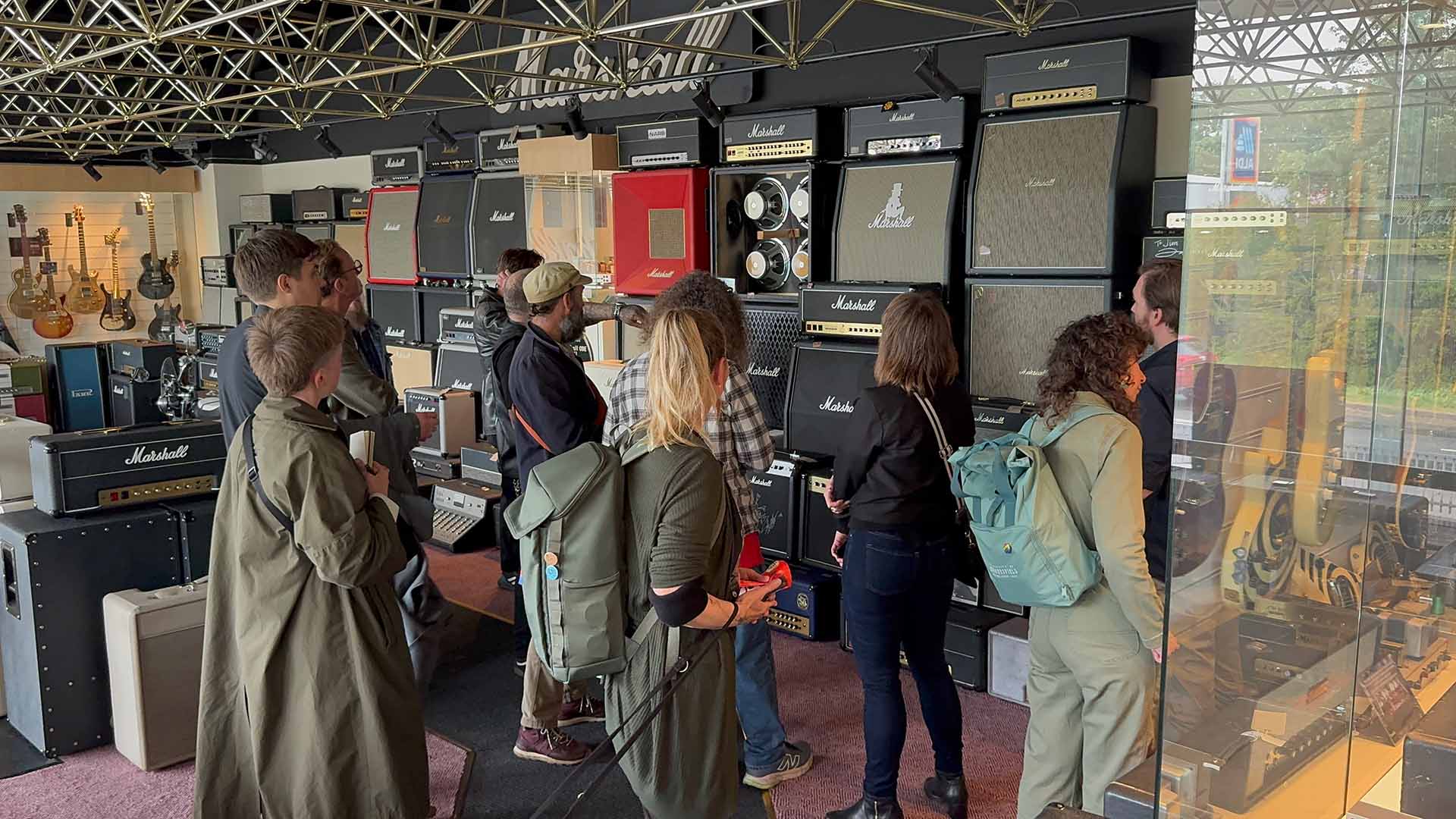
A team of researchers from the University of Huddersfield’s Amplification Project has gained invaluable insights into arguably the most famous amplifiers in rock music with a visit to the home of the legendary Marshall Amps.
Led by Professor Steve Waksman, one of the world’s leading scholars in the study of music technology, instruments and live music, the team toured Marshall’s factory in Bletchley to see every stage of the process that produces Marshall’s iconic amps.
Formed in 1962 by Jim Marshall in Hanwell, West London, Marshall’s famous black amps have been used by luminaries including Jimi Hendrix, Jeff Beck, Slash, Ritchie Blackmore and Paul Weller. Marshall even created a special limited-edition amp that goes up to 11, rather than just 10, in honour of their mention in the film ‘This is Spinal Tap’.
The Amplification Project is exploring the evolution of amplified sound over the course of five years, backed by £5m from the prestigious Leverhulme Trust. The six post-doctoral researchers and 12 PhD students are undertaking the most extensive study of the subject to date under the guidance of a team headed by Professor Waksman, who previously taught at the prestigious Smith College in Massachusetts.
Outputs planned for the project include at least four books as well as journal articles from the research team, as well as conferences and events in Huddersfield.
Study Sound Engineering and Music Production
With its storied history, Marshall’s UK base was an ideal place to learn about not only how the amps are made but also to see a selection of the kit that has featured in some of rock music’s most famous moments.
“After reading everything I could get my hands on about the company, Marshall's museum provided a unique opportunity to see many of the most pivotal Marshall amps up close,” says Professor Waksman.
“There are amps that were played by Slash, Lemmy from Motörhead, Zakk Wylde, Paul Weller, and the infamous Spinal Tap ‘goes to 11’ amp, as well as models of the amps that have been played by Jimi Hendrix, Pete Townshend, Ritchie Blackmore and a host of other rock legends.
“In the middle of it all was the very first amp built by Marshall, which is now behind a glass display case, enshrining the moment when Jim Marshall and his collaborators became the manufacturer of amps that would be the first choice for multiple generations of performing artists.”
Seeing every stage of the manufacturing process
Marshall’s range now extends to TV soundbars, Bluetooth speakers, drinks and even fridges that mimic the matte-black look of the famous amplifiers, which are still handcrafted at the facility near Milton Keynes.
"As eye-opening as the museum was, the real excitement came with the factory tour," Professor Waksman adds. "We spent over an hour walking through the working Marshall factory in the middle of a normal workday for the company’s employees. We saw circuit boards being soldered together by a dedicated machine, while in a nearby workstation a different set of circuit boards were being hand-wired by highly skilled craftspeople.
"In other rooms of the factory, we saw cabinets being carved and assembled, being covered in Tolex - the cratered vinyl that gives the amps their unique appearance - and saw the chassis with all the requisite components being put together and installed.
"We also got glimpses into the distinctive corporate culture of Marshall as well – signs that encouraged workers to 'make it loud', or 'Danger: Guitar will not work properly without Marshall'.
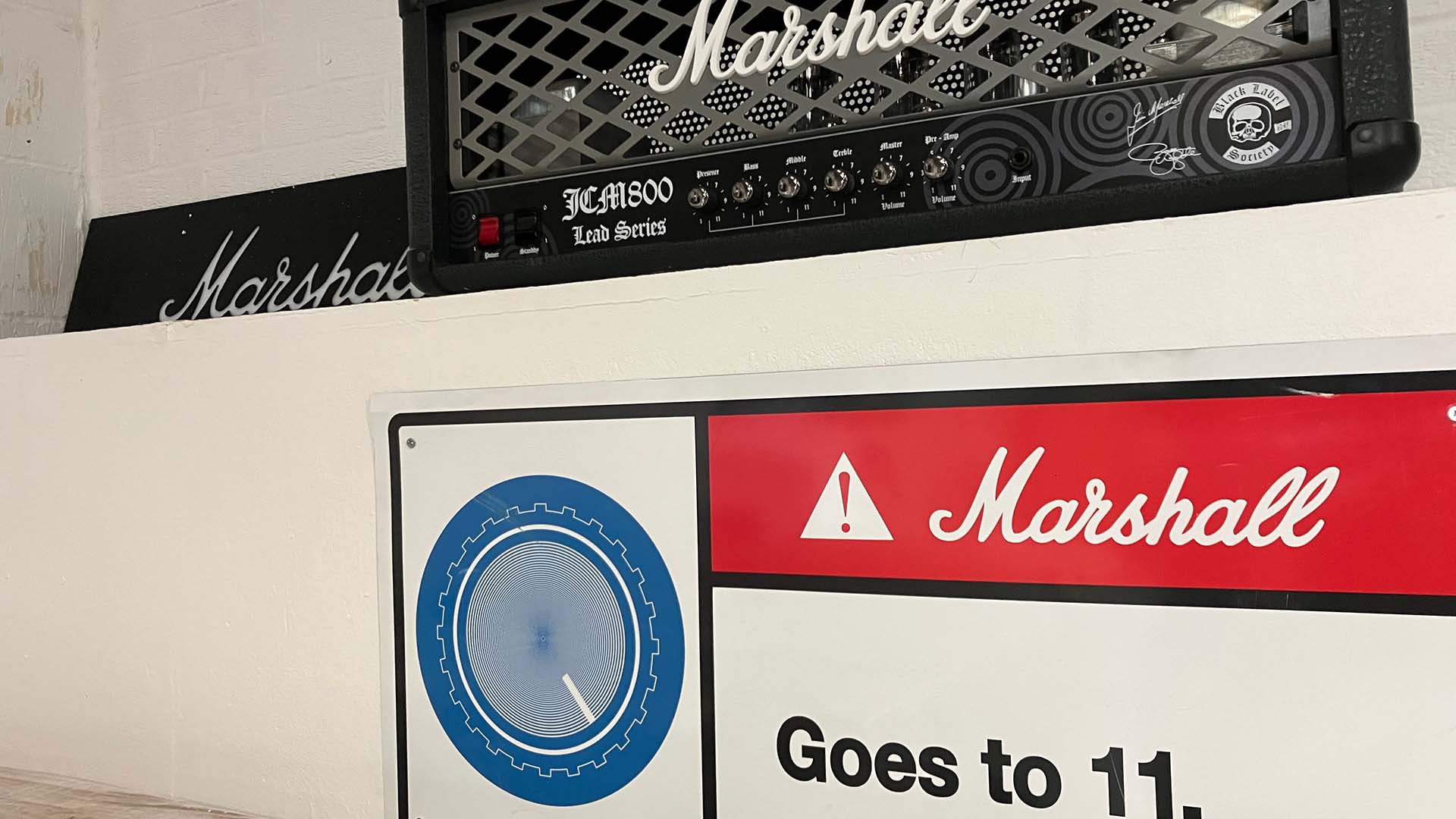
"While we were kept at a safe distance from the machinery, we came away with a vivid sense of the complex mix of automated processes and finely honed handiwork that goes into the making of Marshall’s amps. As our project evolves, I hope that we can use this knowledge as a building block to gain greater levels of insight into how amps are made and designed and what features contribute to the distinctive tonal properties that they possess."

